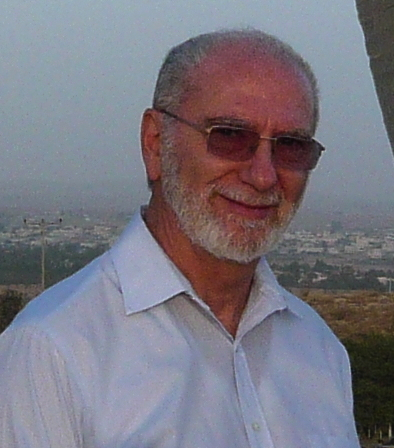|
 My E&M book -- Light
and Matter: Electromagnetism, Optics, Spectroscopy, and Lasers, (Wiley,
2006). My E&M book -- Light
and Matter: Electromagnetism, Optics, Spectroscopy, and Lasers, (Wiley,
2006).
 My QM Book -- Quantum
Mechanics with
Applications to Nanotechnology and Information
Science, Y. B. Band & Y. Avishai, (Academic Press --
Elsevier, 2013). My QM Book -- Quantum
Mechanics with
Applications to Nanotechnology and Information
Science, Y. B. Band & Y. Avishai, (Academic Press --
Elsevier, 2013).
 CV
and List of Publications (links to pdf files of recent
publications) CV
and List of Publications (links to pdf files of recent
publications)
 Post-doctoral
Positions: Post-doctoral
Positions:
Type
1 post-doc positions
Type
2 post-doc positions
 Links
to: Links
to:
BGU Department of Chemistry,
BGU
Department
of Physics,
Ben-Gurion University homepage,
Ben-Gurion
U. atom-chip lab.
|

|

 Research Interests:
Research Interests:
Collision theory, quantum
mechanical
scattering, light scattering, nonlinear optics, electro-optics and
quantum-optics, laser physics, atomic
and
molecular physics, chemical dynamics, dissociation of molecules, charge
exchange processes, electron transport in condensed phase
systems,
Bose-Einstein condensation and Cooper pairing in degenerate quantum
systems, thermodynamics,
and quantum information.
Professor
Band
has worked on Bose-Einstein condensation and Cooper pairing of trapped
atomic gases,
quantum information processing and optimization of quantum gates,
ultra-cold collisions
of atoms and molecules, quantum theory of electron transport in small
electronic devices, optically induced population transfer in molecules,
the
relationship of absorption and emission in multilevel systems,
application of
the birefringence of solid-state laser media to laser line narrowing
and
tuning, nonlinear optical properties of molecules, pulse compression
and
mode-locking of lasers via processes involving nonlinear light
absorption,
three-wave mixing with multimode fields, the spectrum of
second-harmonic
generation, intracavity and extracavity second-harmonic generation,
intracavity
and extracavity Raman processes, pulse compression in fiber Raman
lasers,
optical solitons, thermodynamics of processes occuring in finite time
with
finite rates, photodissociation of diatomic molecules to open shell
atoms,
triatomic molecule photodissociation.

This
page created by Yehuda Band
Last updated March 18, 2015


